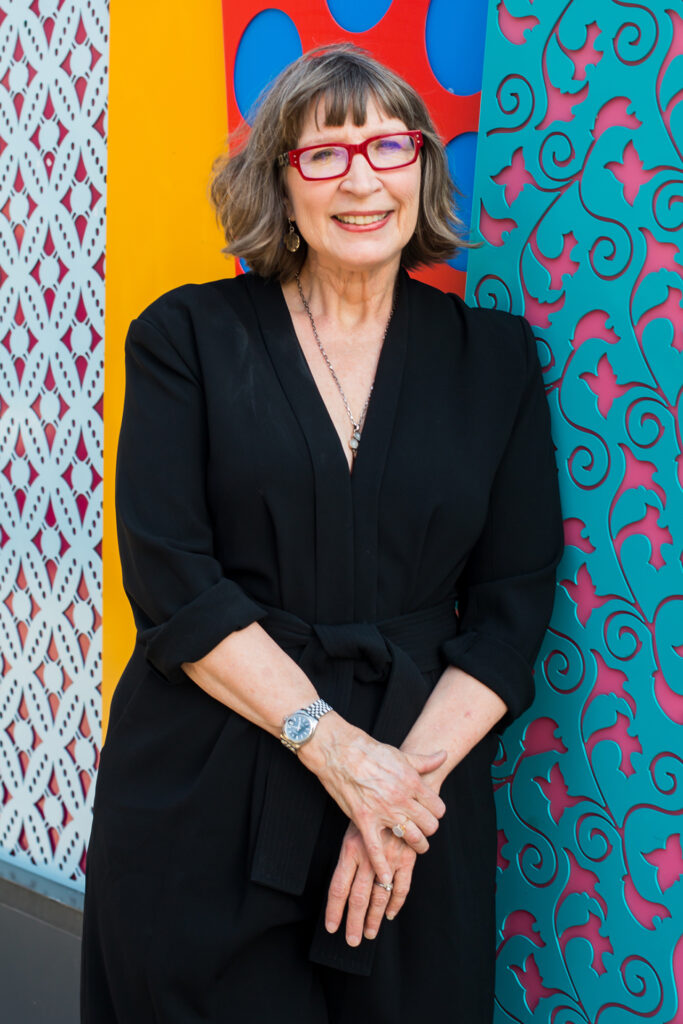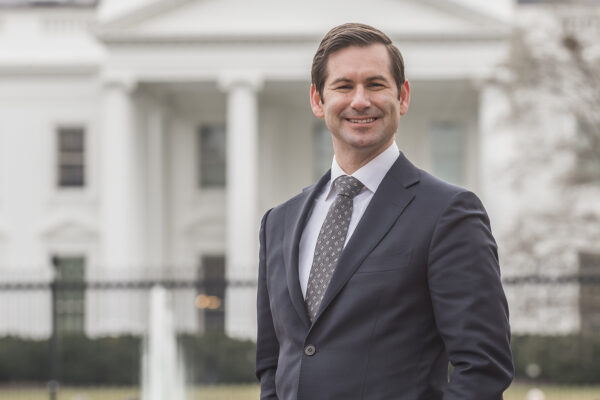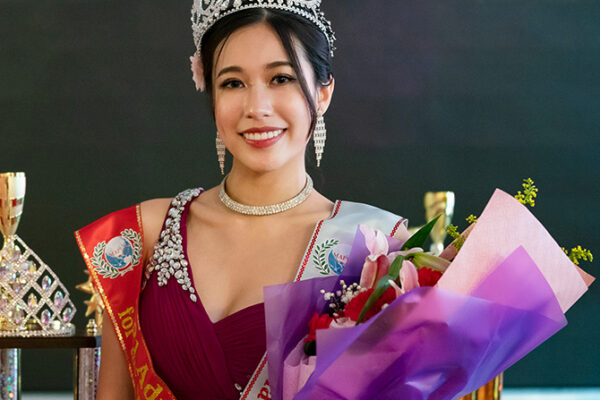
Molly Maginnis Tippe, BFA ’73, entered WashU in 1969 thinking she wanted to be a fashion designer. But she didn’t like the business side of it. So she switched to painting and became interested in acting. In her first performance, Venus Observ’d, she looked at the costumes and thought, “I could do that!”
At the time, costumes for WashU productions were designed by local seamstress Nikki Juncker, who took Maginnis under her wing for a production of Salome. “I designed the costumes, and Nikki built them,” Maginnis says. “After that, I was off to the races.”
After WashU, Maginnis went on to earn an MFA in costume design from Carnegie Mellon University. She began designing for Broadway, rising through the ranks backstage and getting her break on the 1983 revival of Showboat. Eventually, she moved to Los Angeles and began designing costumes for movies and television, costuming everyone from Jack Nicholson to Janelle Monae. Fifty years after receiving her WashU diploma, she reflected on her career.
I found the pathway to performing arts, fashion and storytelling at WashU, where I was allowed to spread my wings. An art background is important, but so is learning about the history of art, of architecture and other social occurrences. All of it worked together to make me a better storyteller because I learned how to do research here. When you’re designing for film or TV, you’re not just looking at pictures of dresses or hemlines of a particular year. It’s understanding the societal changes that made that fashion happen.
Costume design has changed over the years, but the basics haven’t. When I work on contemporary stories, I shop stores, boutiques, vintage stores and the internet. Sometimes, it’s a combination of created pieces and shopped clothing and accessories. But I always go back to the basics, and that’s storytelling. A lot of young costume designers go wrong when they become stylists looking for the next pretty dress. They forget how important it is to tell a character’s story and not get involved with trends. None of it means anything if the costume is inauthentic and untrue to the character.
You have to make sure the clothes fit the way you want them to. If we have a character in a suit, for example, we might try three suits with three different shirts. Then we’ll send photographs off to the director or show runner. But you don’t want to send anything until both you and the actor love the costume. I don’t need to be on a set every day, but I go back any time new clothes are needed for a major character. I’m always trying to get ahead of what’s coming next.
By working through the story and the character, I give actors the confidence they need to move forward, with confidence that they are on the right path. I’m not trying to score points with a design house on an actor’s name or reputation. It’s my hope that the next generation of costume designers will stay interested in becoming storytellers instead of fashion designers.
Bonus Content: Designing the perfect costume
Maginnis was costume designer for the 1997 James L. Brooks classic, “As Good As It Gets,” starring Jack Nicholson and Helen Hunt — both of whom won Oscars for their performances. Here, she talks about how she outfitted Hunt for the scene in the restaurant where Hunt’s character, Carol Connelly, a single mother who waits tables, finally falls for Nicholson’s quirky writer Melvin Udall. To set up the scene, Nicholson’s Udall is sent away at the door of the restaurant and says later, “Why do I have to wear a tie and jacket if you’re wearing a house dress?” That line sent Maginnis in the direction, she says, of a vintage shirtwaist:
I had a strong feeling that it should be more of a vintage piece. She has no money, but she might have found this in a secondhand store. And so I went hunting and found a red polka dot dress at a costume house. It had no buttons so I found these wonderful mother of pearl buttons. I had her wear a pearl necklace, one my parents gave me when I was 16. I had a purse that a friend had given me. I bought her shoes at JC Penney’s. And I found a wonderful piece of 1950s vintage fabric that I made a shawl out of, just to give it a little je ne sais quoi. Plus it was red. That red color gave her a certain amount of confidence.


